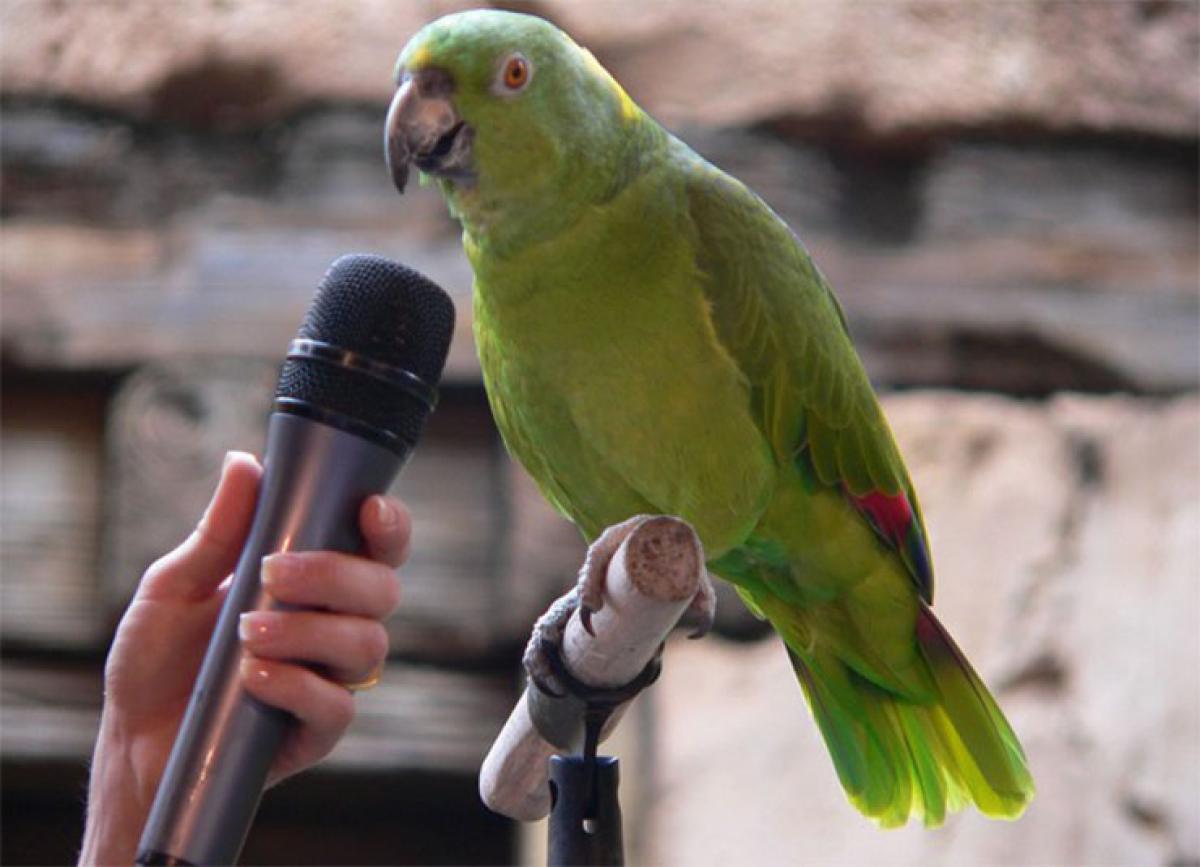Live
- India rated as fastest growing G20 economy
- Maha campaign ends, polls tomorrow
- Assailants of Cong leader held after encounter; 2 hurt
- Manipur situation: 1 protester dead
- CID books Posani for defamatory comments against CM
- Bad weather: 15 flights diverted, over 100 delayed
- Raj HC stays posting of sub-inspectors
- AP, TG move forward to settle bifurcation issues
- Govt abolishes two-child norm for local body candidates
- Warangal to reverberate with ‘Praja Palana Vijayotsavalu’
Just In

Talking parrots have always been an amusement to most people, and how and why they are able to \"talk\" have been a mystery to most scientists—up until recently. A group of international scientists led by researchers from Duke University in Durham, North Carolina studied parrots and identified differences in structures in the birds\' brains that may explain how and why they are able to imitate sounds, including speech.
Talking parrots have always been an amusement to most people, and how and why they are able to "talk" have been a mystery to most scientists—up until recently. A group of international scientists led by researchers from Duke University in Durham, North Carolina studied parrots and identified differences in structures in the birds' brains that may explain how and why they are able to imitate sounds, including speech.
In the past 34 years, studies have been published, but none recognized the structures that have recently been discovered. The recent findings, published in the journal PLOS ONE, tackle the cores and shells found in the brains of parrots that may explain the birds' ability to mimic sounds and human speech.

The researchers examined gene expression patterns and identified cores as defined centers in the brain and shells as outer rings that control vocal learning. "It takes significant brain power to process auditory information and produce the movements necessary for mimicking sounds of another species," said Mukta Chakraborty, a post-doctoral researcher at Duke.
The study is a start, but Chakraborty intends to find how specialized the brains of the parrots are. "Is it just a select group of specialized genes, or is it some specific projections that we haven't discovered yet?" he further asked. Researchers from Denmark and the Netherlands donated parrot brain tissues and characterized eight species' brains.
Apart from the budgerigar, they looked at the conure, cockatiel, lovebirds, two Amazon parrot species, blue and gold macaw, kea and African Grey parrot. They located specific markers that pointed to functions in human brains and song-learning in birds, and compared these gene expressions in parrot brains and neural tracing experiments in budgerigars.
The shells that are present in even the kea, which is the most ancient parrot species, suggest populations of neurons that may be more than 29 million years old. "I was surprised. I think bird brains are definitely understudied, but they've been studied enough that we should have recognized this region before," said Erich Jarvis, neurologist at Duke.
While the recent study has not clearly determined how the shells directly affect parrots' speaking ability, the simple discovery of these shells have led the researchers to pursue more studies to get a clearer picture of how these regions in the brain affect the parrots' ability to imitate sound.
The study was supported by the Howard Hughes Medical Institute, the National Institutes of Health, University of Copenhagen, Framework Grants from the Danish Council for Independent Research and the Copenhagen Zoo.

© 2024 Hyderabad Media House Limited/The Hans India. All rights reserved. Powered by hocalwire.com







